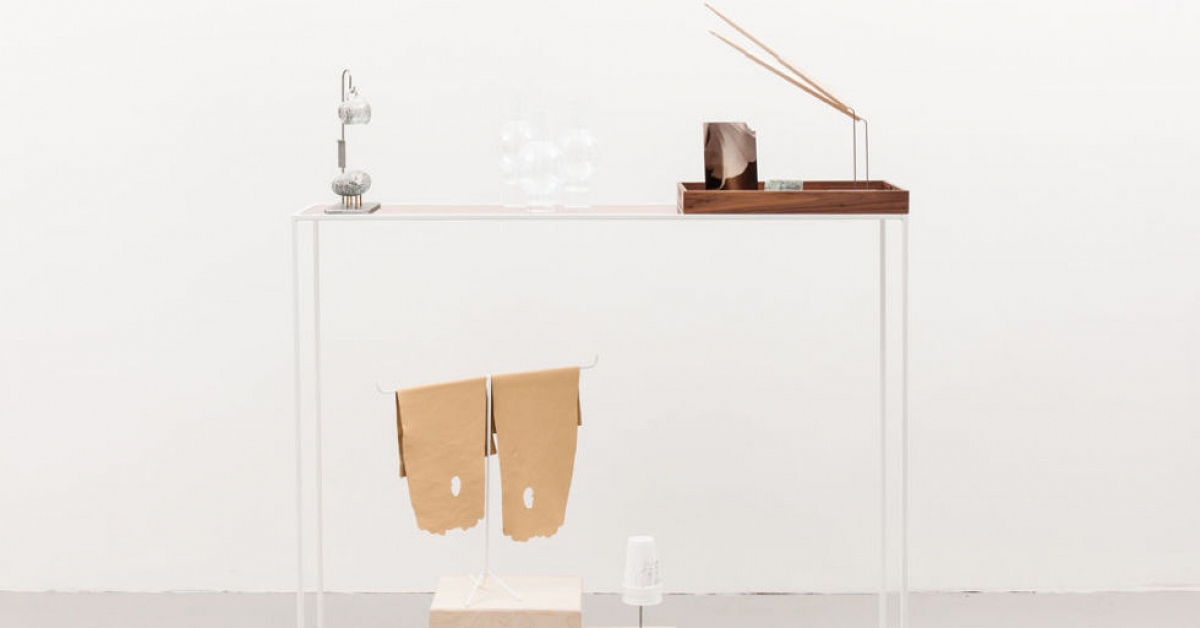An Artist Gives Us a Vision of the Future Through Books
Hyperallergic / Jan 10, 2017 / by Seph Rodney / Go to Original
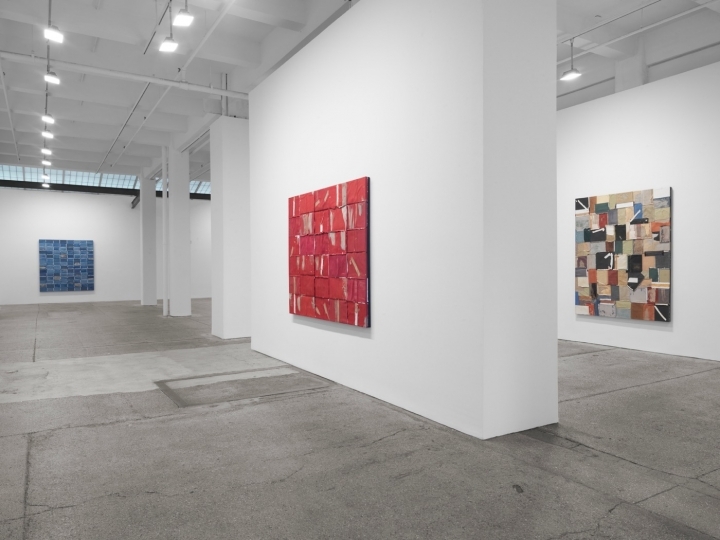
A science fiction novel by Jane Yolen illustrates that we write things down to make our peace with forgetting them. Describing a culture founded on memorizing and reciting oral histories, Yolen writes “to hold in the mouth is to remember; to set down is to forget.” Books, by this light, are illusions we’ve concocted to entertain the fiction that we are knowledgeable. Samuel Levi Jones in his exhibition Burning all illusion conveys this realization, makes it visually palpable, but then turns away from the nihilism such a view might suggest.
Walking into the show you enter a gleaming, high-ceilinged, white cube with concrete floors where the temperature drops. It’s suddenly colder in here, more formal. You see canvases of regimented, modernist schemes consisting of book covers and book spines placed on the wall in color stories: crimson, gold, navy accented by lighter blues, sea green with traces of a darker moss. These pieces measure about four feet by five feet, or the larger ones about six by five, with the most visually provocative compositions being the ones in which the colors are jumbled together, and the spines and covers combined. Placed in a grid, the 38-year-old artist has stripped encyclopedias, law books, and other hardback, reference tomes down to their covers, and in so doing stripped them of their promise of our in-depth comprehension of the world.
Books fail. Encyclopedias don’t educate (perhaps because they are left in dusty corners). Law books don’t regulate public behavior, because we ignore the law when it’s convenient. Indeed, that’s why we need police. We fill books with knowledge that’s been painstakingly acquired over time and then put them aside, saying to ourselves one day we will get back to them.
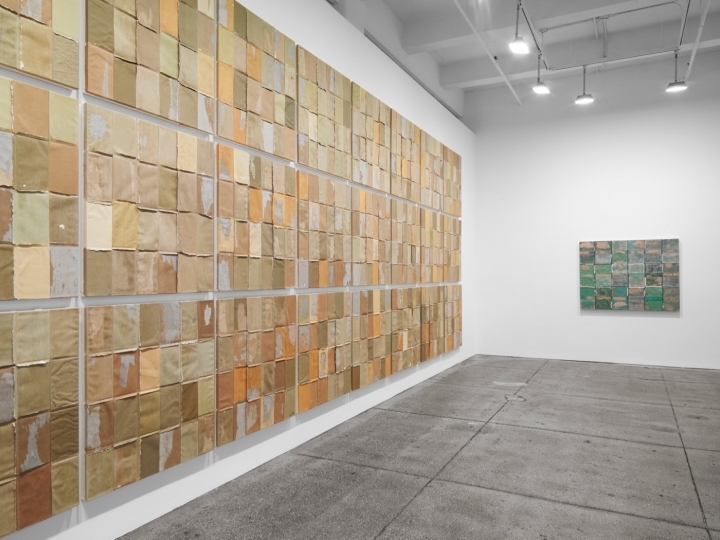
The Chicago-based artist’s books do represent abstract arguments concerning history and the acquisition of collective knowledge: he has essentially destroyed historical accounts and remade them, to say it is possible to construct new histories, new edifices of knowledge. He’s done so by tearing the covers off books, but also by obscuring all but a few select words on the faces and spines. If I spend a little while looking I find titles: Race Relations; Ethnicity in the United States; The Book of Knowledge Annual. These words become clandestine operators poking out from Jones’s simple color schemes. Before his intervention, these words were swallowed up in a cascade of language. Like the artist Fred Wilson, Jones makes the histories that are mostly unspoken and ignored visible and important. More, this work is a crucial signal distinguishing itself from the white noise around issues of race and ethnicity these books often end up being a part of — even when they are read. In “Joshua” (2016) the words are blotted out except for the ones that damningly indicate the institutionalization of violence that underlies our claims of civilized behavior: “Criminal; Homicide; Assault; Officers and Public employees.” We are reminded here that criminal action including assault and murder are regularly carried out by employees of the state on bodies in their care.
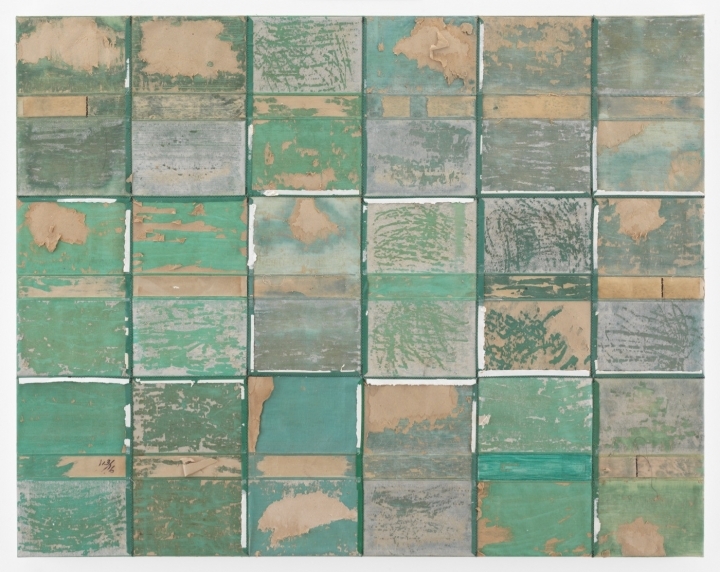
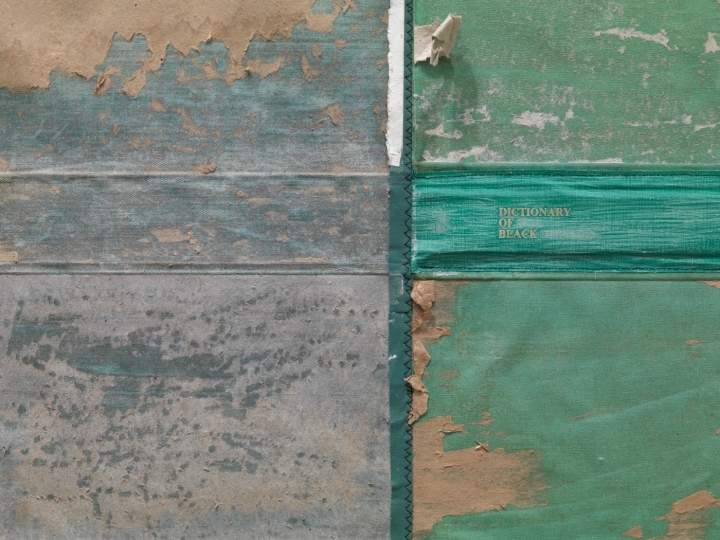
Jones both destroys books and keeps them in memory, carefully and attentively sewing book covers onto canvases to make the case that some sort of collective history can be lovingly remade, be rethought, reimagined — with different emphases. Perhaps we don’t have to give in to the hopeless, nihilistic impulse to burn books, burn down all that will catch afire, and begin again from the ashes. We might instead look to destroy the idea that we are educated and civilized. But I want to ask Jones, “with what kind of flame do you set fire to these ideas?”
Samuel Levi Jones, Burning all illusion continues at Galerie Lelong (528 West 26 Street) in Chelsea, Manhattan, through January 28, 2017





